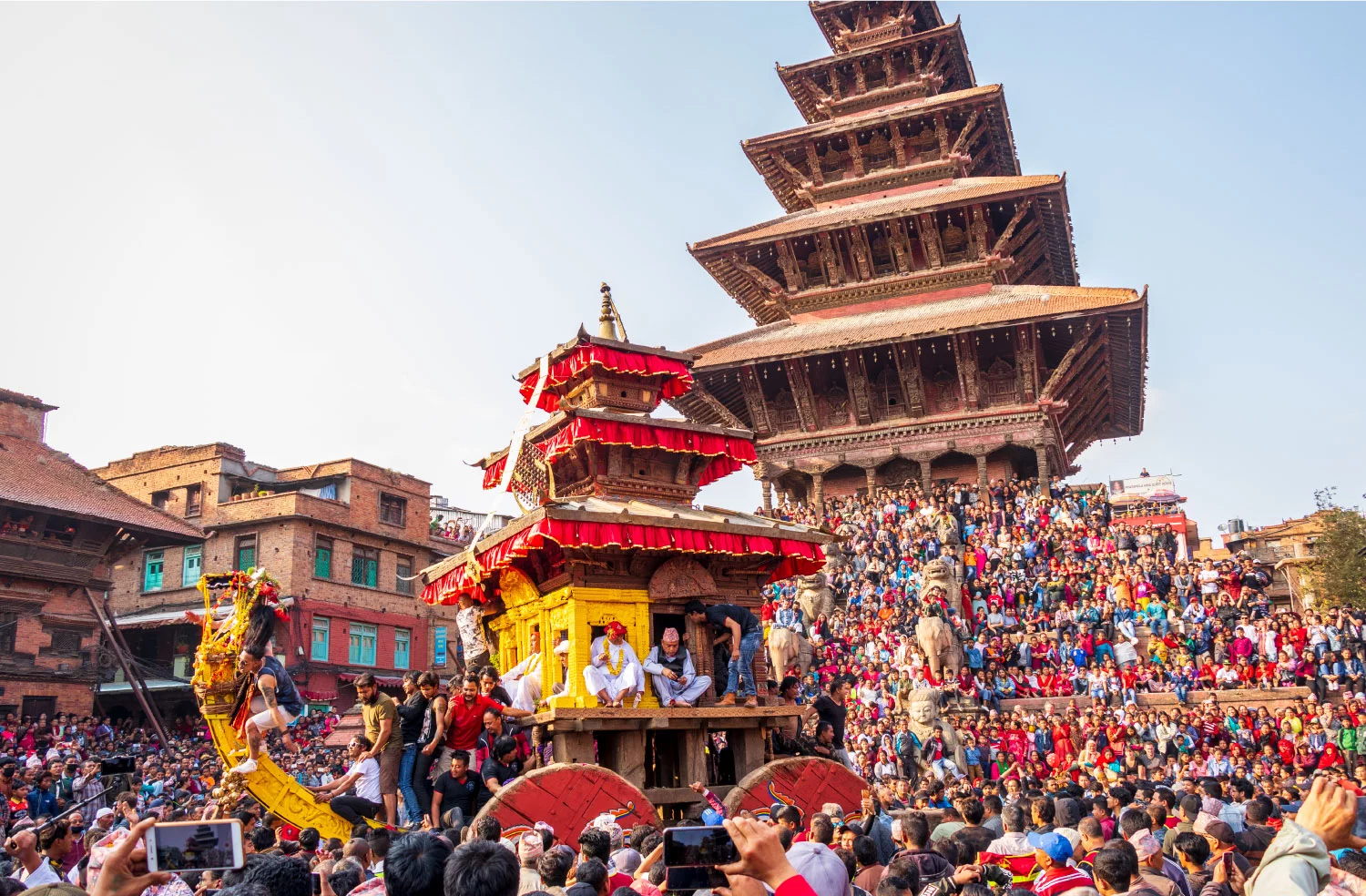3 March
Top 3 festivals in Kathmandu valley
Indar Jatra
The largest religious street event in Kathmandu, Nepal, is called Indra Jatra. In Nepal Bhasa, Indra Jatra is frequently referred to as Yeny, where Ye stands for “Kathmandu” and Ya for “celebrate,” which combined imply “Celebration inside Kathmandu.” The two main activities of this festival are the Indra Jatra and the Kumari Jatra. Indra Jatra features tableaus honoring the god Indra, the monarch of heaven, masked dances of gods and demons, and displays of holy images. The live goddess Kumari is carried on chariots during the Kumari Jatra. Yala, the eleventh month in the lunar Nepal Era calendar, is celebrated for eight days, from the 12th day of the brilliant fortnight to the 4th day of the dark fortnight.
Bisket Jatra
One of the main holidays in Bhaktapur is the Bisket Jatra. Although the event is observed at the beginning of the new year according to the Bikram Sambat calendar, it is unrelated to the Bikram Sambat. Although it is observed all across Bhaktapur, Bhaktapur Durbar Square and Thimi Balkumari serve as the event’s primary locations. A statue of the God Bhairava is pulled to the Kholle tole by hundreds of devotees. The chariot is put together close to the Nyatapola temple (commonly known as the Five Stair Temple).
Rato Machindranath Jatra
Avalokitesvara, the Buddhist god of mercy, is honored in Lalitpur, Nepal, during the Rato Macchindranath Jatra, also known as Buga Dya Jtr in Nepali. It is the longest chariot festival observed in the nation and one of the biggest religious festivals in the city. The rain-giver Rato Macchindranath is adored. In relation to the hue of the deity’s representation, the name “Rato” signifies “red color.” According to the lunar Nepal Sambat calendar, it starts on the fourth day of the bright fortnight of Bachhala, which is the seventh month. King Narendra Dev, who ruled from 640 to 638 AD, founded it.
